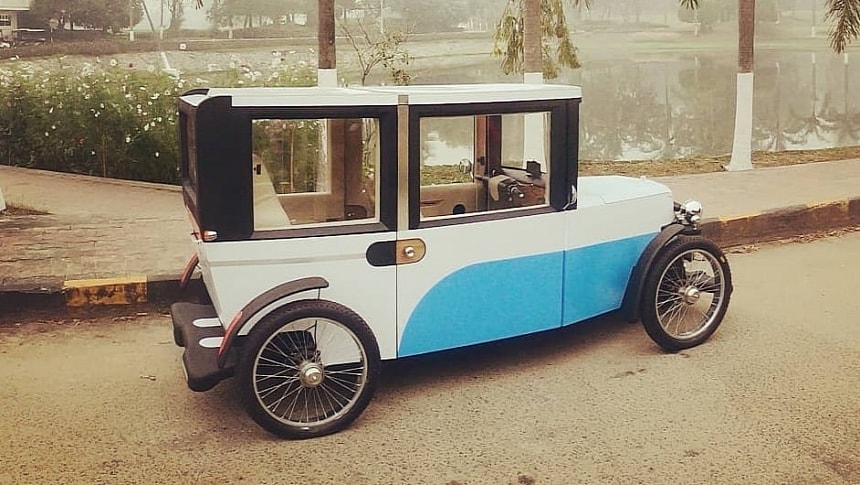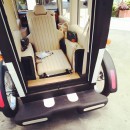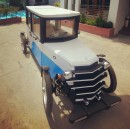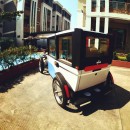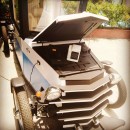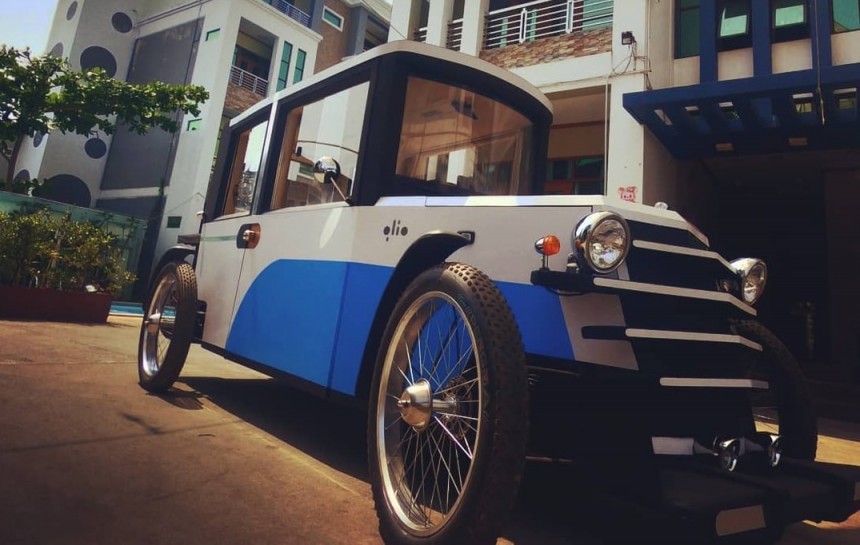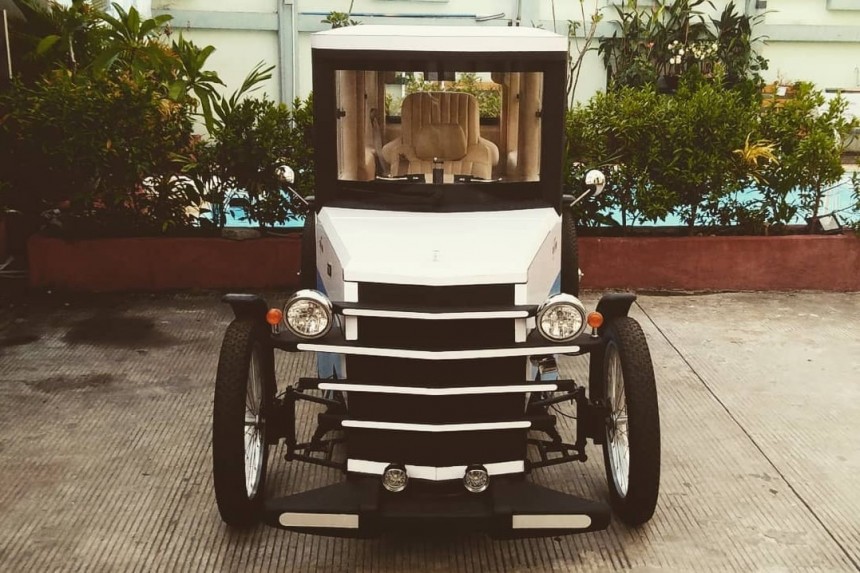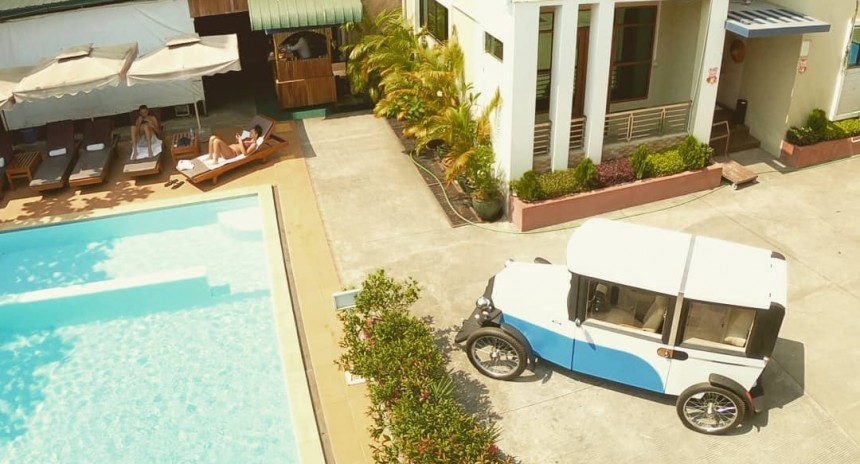The world is a wild and crazy place, even full of kooky and goofy ideas. With that in mind, lend me your eyes for the next few minutes so that we can explore a different kind of vehicle, one that looked like cars from the 1920s and 30s but was, in fact, a velomobile or pedal-operated.
I'll be honest; the first time I locked eyes with the Qlio, I didn't quite understand what I was looking at. I thought it might have been a custom job from someone in their garage, and it kind of is, but as I dove deeper, I realized that Qlio was something else entirely.
Sure, it looks like an of-era vehicle, but is, in fact, a pedal-operated four-wheeler with a motor and seating for two people; one's the driver and the other a passenger that's to be along for a ride that soon won't forget. The question is, how did we get here?
Well, the Qlio Velo, as it's called, was a failed crowdfunding project from 2019 to 2020. As for why it never took off, what was in store, and if we may ever see this contraption again, are questions we'll be answering today, and it all starts with an exploration of this project's Indiegogo page.
First and foremost, this project seems to have been aimed at a particular audience: England, as pricing for a new Qlio was set in British Pounds. The odd thing is that the campaign was started in San Francisco. Already, I can tell that shipping costs would have destroyed this dream or rendered it too expensive for the average Joe.
Speaking of costs, the Qlio was supposed to be selling for £4,850 ($6,200 at current exchange rates) for the most basic model with a 250 W pedal-assist motor, a 20 Ah battery, and most importantly - and what I feel is the reason for such a grand price tag - the presence of a 1,000 W AC generator that would recharge batteries on the go.
That last bit of information is one feature that would have made me think about investing in this project. After all, the allure of being able to recharge your battery on the go is very hard to resist. But, Once you start showing people prices like those, it's already a bit out of hand; the only place left for a Qlio would have been at the center of a velomobile business.
Oh, and the price tag just kept going up and up the more features your Qlio was to be decked out with. For instance, the top-of-the-line model, the 1,000 W version, was equipped with a motor from Bafang with that precise output, the same 20 Ah battery and AC generator, but was to sell for £5,250 ($6,600).
As for what this cash was supposed to get us, we would have been buying an electric quad built around an aluminum frame and completed with an impact-resistant foam body. Yes, foam made up the exterior of this "vehicle." I won't lie; an image on Qlio's Facebook page reveals just that, and at first, I thought I was seeing things, but it's all very real.
Funny enough, the project page also mentioned something about that shell being modular in order to meet the needs of personal and commercial activities alike. Did I mention that there are actual "crash crumple zones" integrated into that foam shell, including side impact protection? I'm not sure how far foam can go against an impact from a one-ton vehicle or heavier, but you know, whatever sells, or in this case, doesn't.
Yet, there's no denying the Qlio's visual attraction. Aside from some missing side skirts and a lowered stance, the Qlio comes across as bringing back a look that we typically see on a Sunday, when folks take their timeless and loved classics out for a spin around town. With the Qlio, it's Sunday every day.
Then there's the interior, which I found rather interesting, mainly because it offers a whole theater or recliner seat experience for the passenger, not to mention a view of the world they're leaving behind. Leather seems to be the material of choice here, and with a couple of seatbelts, two separate seats, and a steering column, the Qlio is finished.
The manufacturer also mentions that this thing was to be 100% recyclable, and all the wood we see is a hint as to why that statement was made. But is foam recyclable? Well, yes, some foams, mainly those used for shipping and packaging, can be recycled into other items such as insulation.
Finally, consider that the would-be manufacturer behind this project deemed the Qlio as being a valid urban solution no matter the weather and even AT-worthy; there was supposed to be no end to the possibilities of what was being offered.
So, why did this Dodo bird die out? Well, we don't know; it literally just went poof! There are no messages from the two backers who did and nothing on the Facebook page or any other social media outlet; these things happen.
Still, I could see a rival of a vehicle similar to the Qlio any day, really, especially if the looks hit that 1930 mark. The result would be an urban-friendly and green EV with the ability to generate its own juice. Heck, strap a solar panel to it and take things to the next level.
Sure, it looks like an of-era vehicle, but is, in fact, a pedal-operated four-wheeler with a motor and seating for two people; one's the driver and the other a passenger that's to be along for a ride that soon won't forget. The question is, how did we get here?
Well, the Qlio Velo, as it's called, was a failed crowdfunding project from 2019 to 2020. As for why it never took off, what was in store, and if we may ever see this contraption again, are questions we'll be answering today, and it all starts with an exploration of this project's Indiegogo page.
Speaking of costs, the Qlio was supposed to be selling for £4,850 ($6,200 at current exchange rates) for the most basic model with a 250 W pedal-assist motor, a 20 Ah battery, and most importantly - and what I feel is the reason for such a grand price tag - the presence of a 1,000 W AC generator that would recharge batteries on the go.
That last bit of information is one feature that would have made me think about investing in this project. After all, the allure of being able to recharge your battery on the go is very hard to resist. But, Once you start showing people prices like those, it's already a bit out of hand; the only place left for a Qlio would have been at the center of a velomobile business.
Oh, and the price tag just kept going up and up the more features your Qlio was to be decked out with. For instance, the top-of-the-line model, the 1,000 W version, was equipped with a motor from Bafang with that precise output, the same 20 Ah battery and AC generator, but was to sell for £5,250 ($6,600).
Funny enough, the project page also mentioned something about that shell being modular in order to meet the needs of personal and commercial activities alike. Did I mention that there are actual "crash crumple zones" integrated into that foam shell, including side impact protection? I'm not sure how far foam can go against an impact from a one-ton vehicle or heavier, but you know, whatever sells, or in this case, doesn't.
Yet, there's no denying the Qlio's visual attraction. Aside from some missing side skirts and a lowered stance, the Qlio comes across as bringing back a look that we typically see on a Sunday, when folks take their timeless and loved classics out for a spin around town. With the Qlio, it's Sunday every day.
Then there's the interior, which I found rather interesting, mainly because it offers a whole theater or recliner seat experience for the passenger, not to mention a view of the world they're leaving behind. Leather seems to be the material of choice here, and with a couple of seatbelts, two separate seats, and a steering column, the Qlio is finished.
Finally, consider that the would-be manufacturer behind this project deemed the Qlio as being a valid urban solution no matter the weather and even AT-worthy; there was supposed to be no end to the possibilities of what was being offered.
So, why did this Dodo bird die out? Well, we don't know; it literally just went poof! There are no messages from the two backers who did and nothing on the Facebook page or any other social media outlet; these things happen.
Still, I could see a rival of a vehicle similar to the Qlio any day, really, especially if the looks hit that 1930 mark. The result would be an urban-friendly and green EV with the ability to generate its own juice. Heck, strap a solar panel to it and take things to the next level.
